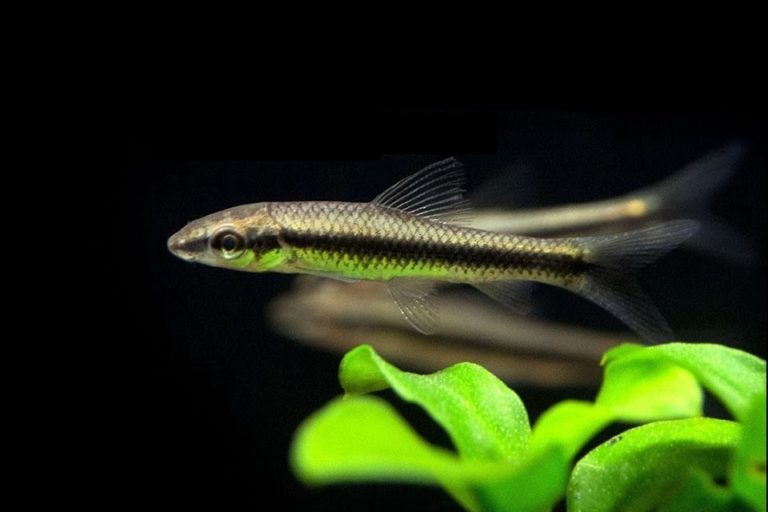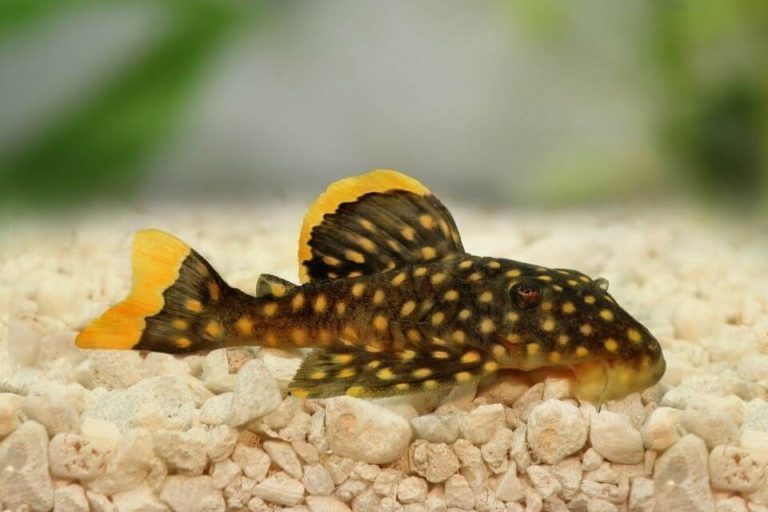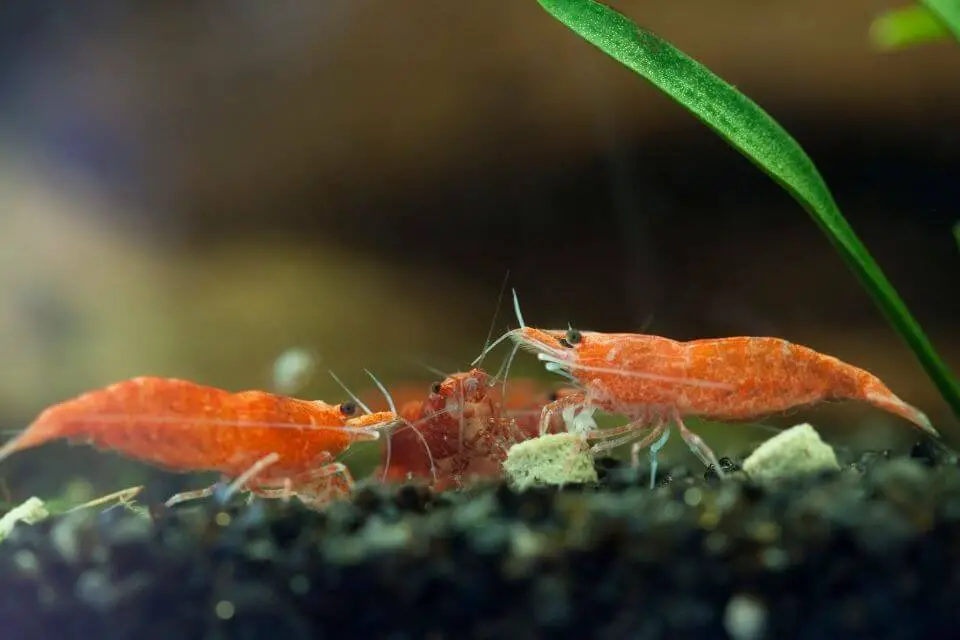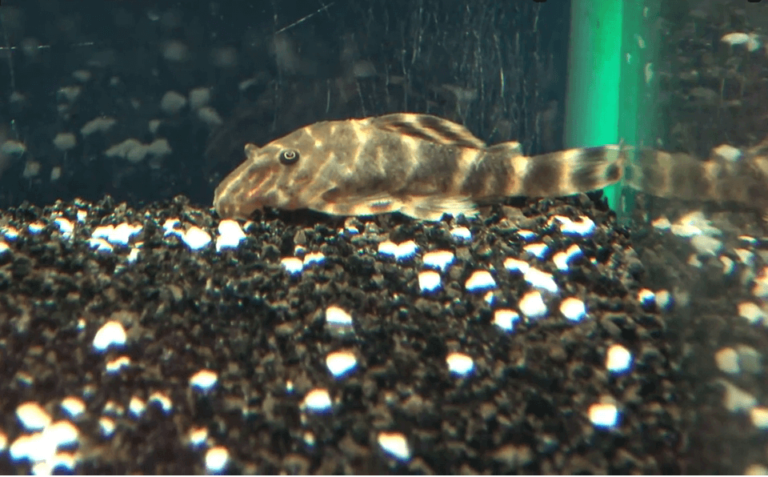Blue Crayfish Complete Care Guide: Tank Setup, Tank Mates and Feeding
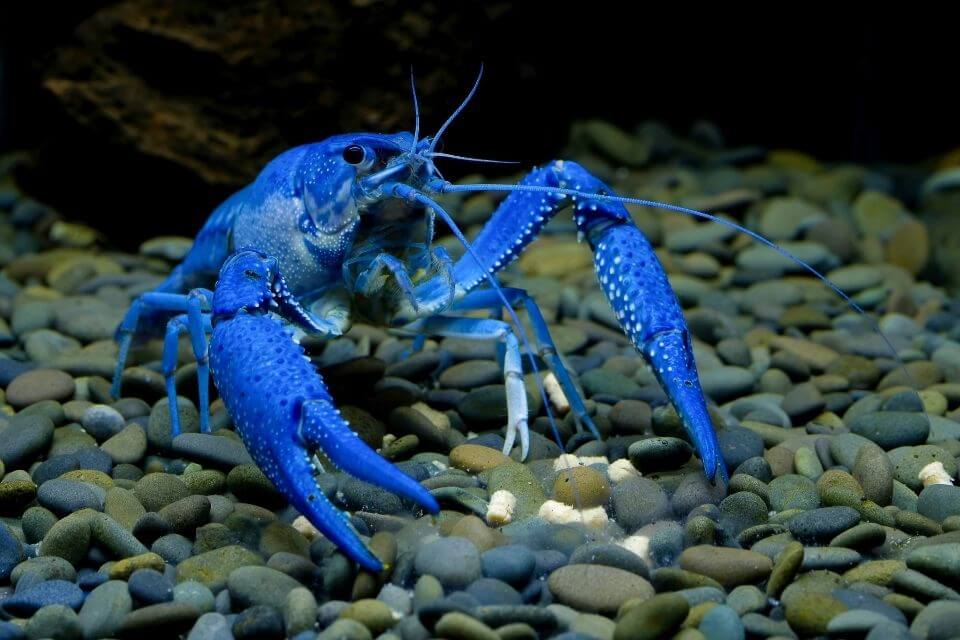
A dazzling addition to aquariums large and small, the Blue Crayfish is a colorful freshwater crustacean that is easy to care for and even easier to enjoy.
There are a lot of things that make the Blue Crayfish one of the most popular freshwater aquarium creatures on the market. Not only is their striking color something that you have to see to believe, but they are relatively easy to take care of which makes them a good choice for beginning and expert aquarists alike.
Before you purchase this crustacean, take the time to learn about its habits and needs. While they are not demanding or hard to care for. It is essential to set up the proper environment and tank conditions so you can ensure a long life for your Electric Blue Crayfish. You also want to make sure that Crayfish can get along with other creatures in your tank before you make an investment.
Keep reading to find the essentials, care tips, and everything you need to know about caring for this crustacean.
| Quick Facts: | |
|---|---|
| Common Names | : Blue Crayfish, Electric Blue Crayfish, Sapphire Crayfish, Florida Crayfish |
| Scientific Name | : Procambarus alleni |
| Family | : Cambaridae |
| Origin | : Freshwater bodies in the Florida region of the United States |
| Care Level | : Easy |
| Lifespan | : 5 - 6 years |
| Size (average) | : 4 - 6 inches long |
| Diet | : Omnivores |
| Breeding | : Egglayer |
| Social | : Territorial |
| Temperament | : Aggressive |
| Minimum Tank Size | : 30 gallons |
| Temperature | : 65 - 75 °F (18 - 24 °C) |
| Water Hardness | : 3 - 10 dKH |
| Water pH Level | : 6.5 - 7.5 |
Overview of Blue Crayfish
Also known as the Electric Blue Crayfish, Sapphire Crayfish, or Florida crayfish while scientifically named as the Procambarus alleni.
This hardy crustacean species is best known for its bright blue coloring and elongated body. According to scientists, Blue Crayfish lack a certain gene in their hard-outer skeleton which causes them to turn that color.
Those who keep freshwater aquariums might find this crustacean to be a standout addition to the tank not only for its color but because it is so easy to keep.
Sapphire Crayfish are peaceful and easygoing creatures and adding them to just about any tank is a breeze. It is also quite simple to breed and distribute crayfish as well, so this might be a good starting point for those who are looking to hold different aquatic species in their tanks.
It is hard to believe that the appearance of this creature is very similar to saltwater Lobsters. But, this crustacean is not a lobster. Lobsters belong to saltwater and Crayfish belong to freshwater bodies.
Origin, Distribution, and Availability
Blue Crayfish are native to the Florida region of the United States. In the wild, they can be found anywhere from the St. Johns River and all along the Florida coast, even traveling as far south as the Florida Keys. These gulf-dwelling crustaceans are sometimes confused with a similar species of burrowing Sapphire Crayfish from regions much further north than Florida.
In the wild, the Sapphire Crayfish ranges from tan to blue in color, but in captivity, they are bred specifically for their dazzling blue. It is very easy to find Blue Crayfish for your tank, as they can be found through a wide variety of distributors.
They are not an endangered species and therefore it is easy to find, breed, and acquire more Sapphire Crayfish for an aquarium collection.
Blue Crayfish Typical Behavior
Most crayfish are known for their aggressive behaviors. The Sapphire Crayfish can be aggressive with both fish species and other crayfish species. They tend to fight over territory, food, and mates. But depending on the size of your tank and the other fish species you have in your freshwater aquarium, you can still keep Electric Blue Crayfish in peaceful conditions.
As omnivores, these crayfish will eat just about anything. This is another reason why aquarists want to be on the lookout for aggressive behaviors. The Sapphire Crayfish will attempt to attack and eat any fish that are small enough to be eaten.
Your crayfish will spend all of their time on the bottom of the tank. In the wild, Sapphire Crayfish are scavengers, meaning they often crawl along the ocean floor in search of smaller creatures to eat. It is important to have a tank filled with rich substrate and plenty of hiding spots for the crayfish to search around and explore.
These crustacean species are very active, making them a desirable choice for aquarists of all skill levels. They are always walking or swimming around and they will even snap at other fish that swim by.
Another unique characteristic of the Sapphire Crayfish is its intelligence. These creatures are very smart, and they will always be looking for ways to try and reach a new spot in the tank or start a fight with their tank mates. Aquarists enjoy watching Blue Crayfish climb big aquarium decorations to try and reach the lid or to snap at another fish that is hovering near the surface.
Characteristics of Blue Crayfish
Blue Crayfish fish has its’ unique distinct characteristics than other crustacean species. The bright color combination and body shape that make them stand out in the aquarium than other fish species. Some of the important characteristics are as below;
Appearance, Colors, and Special Markings
The most noticeable and desirable feature of the Sapphire crayfish is the dazzling bright blue color. Many people think that photographs of the Blue crayfish are edited until they see this crustacean in real life. The striking cobalt hue is what makes them such a unique addition to any kind of tank.

Blue crayfish that have been bred for aquariums will have this brilliant color all over their bodies. Most of them also have dark blue and white spots all around their bodies as well.
Another noticeable feature of the Blue crayfish is its shape. Upon first glance, it is easy to mistake this crustacean for a lobster. While they are in the same family as lobsters, Sapphire crayfish are an entirely different species with their own set of physical traits. Because lobsters are saltwater species, so we do not believe there are freshwater lobsters that exist.
For example, they have a protective exoskeleton to protect their bodies and a thorax similar to what you would see on a shrimp.
There are four pairs of legs on the Blue crayfish and two large claws, which are used to attack and defend. On the backside of this fish extends a long tail, similar to a lobster’s. The underside of this tail has small legs called swimmerets that help them navigate through the water quickly.
The head of the Sapphire crayfish sports two large black eyes and several horns that protrude outward from the skin. This is to protect the mouth and eyes from the environment. You might also notice two long antennae; this is typical of this species and used to search for food.
Size
Under optimal care, a healthy Blue Crayfish can grow to be up to 6 inches long. The average size for a Blue crayfish is between 4 to 6 inches by the time they become adults. As they grow, they will molt their skin. You should expect to see this often in juvenile Florida crayfish.
Lifespan
A healthy Blue crayfish in good care and conditions will live about 5 to 6 years old. This is only achievable through constant care and maintenance. In order to ensure that your Sapphire crayfish live for as long as possible, you need to focus on setting up the optimal aquarium conditions and habitat for them.
Aquarium Care and Conditions for Blue Crayfish
Caring for Blue Crayfish is easy and they can survive well in a variety of different tank conditions. It is important to take some time to learn about the habitat and setups that will best promote the health and survivability of these brilliant crustaceans.
Habitat and Care
Blue crayfish are not too hard to keep healthy, making them a good choice for aquarists who are just starting out. These resilient and hardy creatures make do in a lot of different environments. That doesn’t mean you still shouldn’t set up the tank in a way that works best for them.
You have some wiggle room when it comes to the internal habitat of your tank. Blue crayfish can live with real rocks and plants or plastic decorations without a problem. A fake cave or even some extra PVC pipe can make some good decorations and hiding spots for your creatures.
Blue crayfish want to hide while they molt, as they feel more vulnerable and prone to attacks. Make sure there are plenty of objects in the tank for them to explore.
Tank Size and Tank Setup
There are no strict size parameters when it comes to size requirements for your crayfish. Like most aquarium creatures, however, it is important not to keep them in an environment that is too small.

– Tank Size
My recommendation is to have at least 30 gallons of a tank for fully grown Blue Crayfish. Also, an approximate 20 gallons tank will be enough for juveniles to grow. While some people have kept them in smaller tanks, it is recommended that adults have at least 30 gallons of space to move around due to their size.
Juveniles can be kept in smaller tanks but must transition to a bigger tank once they are fully grown.
– Tank Setup Requirements
A variety of substrate materials will work well for Blue crayfish. Live plants, floating moss, driftwood, rocks, pebbles, and fake decorations can all be good things to put at the bottom of the tank.
As bottom feeders, Blue crayfish will be spending all of their time on the aquarium floor. They will uproot and eat live plants and they will dig through fine substrate materials to scavenge for food below. For this reason, pebbles or even fine sand might be a good option.
Suitable Plants
Keep in mind that Blue crayfish will eat or destroy delicate living plants in your tank. A lot of plants are also good for them to eat, however, so it might be a good idea to have friendly plants around for them to use or eat at their own leisure. Just know that these crustaceans are particularly hard on plants.
You might want to incorporate floating plants into your tank that the crayfish cannot eat in order to promote a healthy underwater environment. Other safe plants that are suitable for them to eat include:
- Hornwort
- Java fern
- Anacharis
- Marimo moss
Crayfish can also do well with plastic plants and decorations. They will not attempt to eat them, nor are they likely to destroy them.
Water Temperature and Conditions
Setting up the perfect water conditions for your Blue crayfish is often the trickiest part of owning these creatures. However, it should not be too difficult to achieve a tank environment that replicates their natural habitat. Thankfully, Florida is a place with many different climates and temperatures, so Sapphire crayfish can adjust easily.
That being said, take a look at some of the ideal water conditions that you will want to work with when you acquire a Blue crayfish.
– Water Temperature
Blue crayfish are used to warmer and more tropical climates, and like most freshwater creatures, they prefer temperatures that stay in a stable range. The ideal water temperature for your Crayfish should range between 65 °F to 75 °F (18 to 24 °C), with 70 °F (21 °C) as the preferred average.
– Water Hardness
Blue crayfish are found in a number of freshwater rivers and lakes throughout the Southeastern region of the United States. Because of this, they can adapt to a wide range of water hardness levels. Any tank with water hardness between 3 to 10 dKH (Degree of Carbonate Hardness) should be suitable for these species.
– Water Acidity
These crustaceans prefer neutral and non-acidic waters. It is a good idea to keep pH levels between 6.5 to 7.5 on a regular basis.
– Water Testing
In the wild, Blue crayfish live in both clear and murky water bodies. You do not have to provide murky waters for your fish, but this is an element of their natural habitat that makes it easy for them to adjust to many different conditions. Invest in a good water filtration and testing kit to ensure that your crayfish remain happy with the water conditions in your tank.
It is crucial that you change out 25% of your tank’s water every week. This is the best way to keep the water clean and safe at all times.
What Do You Feed Blue Crayfish?
As omnivores, Sapphire crayfish eat just about anything. They are very eager about eating and will jump at the opportunity to catch something in their claws and gulp it down. In your tank, you want to be sure that you are giving your Blue crayfish a well-rounded balance of nutrients and proteins that can keep it healthy and thriving.
A standard diet should consist of:
- Algae wafers
- Sinking pellets
- Flakes
Remember that Blue crayfish will also eat plants or other organic materials that they can reach. You should still supplement their diet with the additional treat and enrichment item.
On occasion, be sure to give them the following:
- Diced vegetables
- Small shrimp
- Other plants and algae
Make sure not to feed your crayfish more than they can eat in one meal. Small amounts at a time will do, as too much food will be leftover in the water and can ruin the quality of the tank conditions.

Common Diseases
The thick exoskeleton and protective outer shell keep crayfish safe against a lot of physical ailments and maladies. They are usually healthy creatures that shouldn’t be difficult to keep that way. If your Blue crayfish does get sick, however, it is likely due to poor tank and water conditions.
For example, high amounts of nitrogen can make them sick. Nitrate can cause undue levels of stress, making them more susceptible to diseases. A water change and a substantial diet can usually cure them of any ailment, but there is still a chance that your creature may carry Crayfish Plague.
Crayfish Plague
Crayfish Plague is most commonly found in wild crayfish, so your Blue crayfish have a low chance of contracting that unless they have come from the wild. This illness shows symptoms of vulnerability and weakness, causing the crayfish to be susceptible to infection. There is medication available to help with this illness.
Gender Differences of Blue Crayfish
There are a few physical differences between male and female Blue crayfish. Males are typically a bit larger and have larger claws. Males also have slimmer abdomens, while females are much rounder.
Male Blue crayfish also have an extra set of swimmerets or little legs on the underside of the tail. This extra pair is hardened to provide extra support and defense when swimming.
Females have a small hole on the underside of their tails. There are no coloring distinctions between male and female crayfish.
Breeding the Blue Crayfish
Blue catfish are almost exclusively bred in captivity, and you can easily breed them in your own aquarium. Keep in mind that crayfish can lay hundreds of eggs at a time, which adds a colorful spectacle to your tank – but it is important to keep these eggs safe.
A pair of crayfish who are ready to breed should be separated into their own tanks. Once the eggs are ready to be laid, the female will keep them under her tail for a month. You must remove the male before he eats the eggs.
Are Blue Crayfish Aggressive?
Blue crayfish can display aggressive behaviors towards other fish or even other crayfish species . They will try to eat whatever they can catch, making them very active as they try to snap up things that swim their way. They will likely display aggressiveness towards other invertebrates, so they are likely better off on their own.
That isn’t to say that there aren’t any other species of fish and freshwater creatures that can make good tank mates. They will work well in large communities as well as you know exactly which species to mix together.
Are Blue Crayfish Rare?
Blue crayfish are often bred for their beautiful colors and they are easy to acquire for your freshwater tank. Because of this, they are very common. They are an opposing counterpart to the blue lobster, which is one of the rarest saltwater crustaceans on the planet.
You should have an easy time finding a Blue crayfish through a freshwater fish distributor.
How Many Blue Crayfish Should be Kept Together?
You can keep Blue crayfish by themselves in a large tank or you can house several of them together. Keep in mind that the more crayfish you have, the larger your aquarium should be so you can comfortably accommodate all of them.
If you do decide to keep a group of them altogether, it is crucial that they are all around the same size. Crayfish of differing sizes may attack and attempt to eat each other; Sapphire crayfish that are of the same size will typically not fight. You also want to have a mix of genders as well. They should not be aggressive with one another unless there is limited space or food available.
What Can Live with Blue Crayfish?
There are plenty of species that can peacefully cohabitate with Blue crayfish despite the species’ tendency towards aggression. If you are planning to hold a large community aquarium, you might want to make a list of fish that can feel peaceful in the same tank. The key is to invest in fish that can swim fast or who are too large for Blue crayfish to catch in their claws.
Some good tank mates for the Blue crayfish include:
- Danios
- Rainbow darters
- Guppies
- Red Tail sharks
- Pearl gourami
- Hatchetfish
- African Butterflyfish
Other species will not fare well in a tank with Blue crayfish. They include:
- Shrimp
- Betta fish
- Snails
Slower fish and other bottomfeeders are not good options because they will likely be killed and eaten by the crayfish.
Final Thoughts
Is it time for you to acquire one or two Blue Crayfish for your aquarium? If you have the right tank setup and water conditions in your tank, you can start adding crayfish to your tank without an issue. These brilliantly blue-colored crustaceans are a fabulous and eye-catching addition to any kind of aquarium that is set up to handle these active creatures.
Overall, Blue Crayfish are easy to feed and take care of. They are low maintenance and typically stay on the bottom of the tank, feeding off of their surroundings. If you are looking to add a great conversation-starting creature to your tank, consider the Blue crayfish for a diverse home aquarium.


